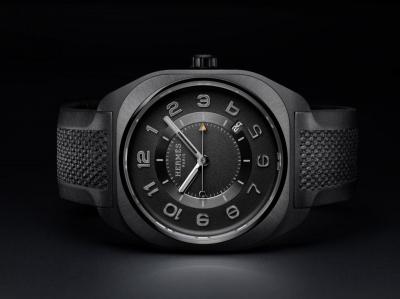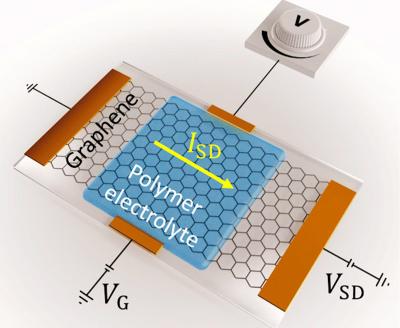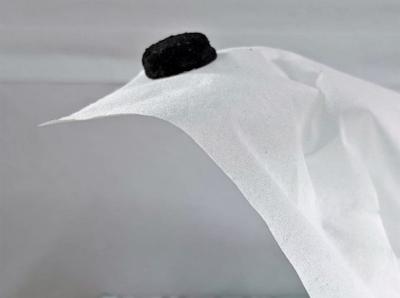The Graphene-Info Newsletter
posted on
Apr 20, 2021 10:33AM

Hydrothermal Graphite Deposit Ammenable for Commercial Graphene Applications

Two teams of researchers have independently reported a certain type of graphene system where electrons freeze as the temperature rises. The first team, with members from Israel, the U.S. and Japan, found that placing one layer of graphene atop another and then twisting the one on top resulted in a graphene state in which the electrons would freeze as temperatures rose. When they tried to explain this, they discovered that the entropy of the near-insulating phase was approximately half of what would be expected from free-electron spins.
The second team found the same graphene system and in their investigation to understand their observations, they noted that a large magnetic moment arose in the insulator. Both teams have published their results in the journal Nature.
The famous fashion brand Hermès has recently launched its new H08 Collection of watches, said to be the "sportiest timepiece series to date", which includes a graphene-enhanced model.

The H08 collection consists of three models, each differing in their case materials and strap options, but otherwise featuring the same overall design. The darkest of the group features a graphene-enhanced composite case with a satin-brushed ceramic bezel.
A team of researchers from Bielefeld and Berlin, together with researchers from other research institutes in Germany and Spain, recently demonstrated that graphene's nonlinearity can be efficiently controlled by applying comparatively modest electrical voltages to the material.
 The gated graphene sample device in which the graphene film acts as a channel between source and drain electrodes subjected to a constant potential difference of 0.2 mV. Image from Science Advances
The gated graphene sample device in which the graphene film acts as a channel between source and drain electrodes subjected to a constant potential difference of 0.2 mV. Image from Science Advances
It was recently discovered that the high electronic conductivity and "massless" behavior of graphene's electrons allows it to alter the frequency components of electric currents that pass through it. This property is highly dependent on how strong this current is. In modern electronics, such a nonlinearity comprises one of the most basic functionalities for switching and processing of electrical signals. What makes graphene unique is that its nonlinearity is by far the strongest of all electronic materials. Moreover, it works very well for exceptionally high electronic frequencies, extending into the technologically important terahertz (THz) range where most conventional electronic materials fail.
Graphene producer NanoXplore and its partner, Martinrea International, have announced a joint venture, VoltaXplore Inc., formed to develop electric vehicle (EV) batteries enhanced with graphene.
A VoltaXplore demonstration facility is scheduled to be opened in Montreal, Canada, within the next year for the development and production of EV batteries enhanced with graphene. The Companies stated that a successful demonstration of improved battery performance using graphene, along with positive feedback from customers, will support the business case for the construction of a battery production facility in Canada.
Battery materials startup Volexion has secured $1.1 million in funding as it moves toward commercialization of its graphene coating for lithium-ion cathodes. The U.S-based company aims to increase its output to “several kilogram” batch capacity after the funding as it works towards its goal of being commercially ready by 2024.
The closing of the first tranche of its $2.2 million seed financing was led by leading climate tech venture capital firms Clean Energy Ventures and Energy Foundry.
University at Buffalo (UB) researchers have developed a novel 3D printed water-purifyinggraphene aerogel that could be scaled for use at large wastewater treatment plants.
 UB's 3D printed ultra-light G-PDA-BSA aerogel. Image credit: UB and 3dprintingindustry.com
UB's 3D printed ultra-light G-PDA-BSA aerogel. Image credit: UB and 3dprintingindustry.com
Composed of aerogel graphene and two bio-inspired polymers, the novel material is reportedly capable of removing dyes, metals and organic solvents from drinking water with 100% efficiency. Unlike similar nanosheets, the scientists’ design is reusable, doesn’t leave residue and can be 3D printed into larger sizes. The team now plans to commercialize its design for industrial-scale deployment.
Trane Technologies’ Thermo King brand has launched a new graphene-based air purification solution for buses that continuously purifies the air while the bus is in operation.
Thermo King says its Air Purification Solution has been independently tested and proven to be 98 percent effective in deactivating certain viruses, including a surrogate for the virus that causes COVID-19.
Australia-based Graphene Manufacturing Group (GMG) is now a public company, and the company's shares are trading on the Canadian TSX Venture Exchange with the ticker GMG following the company's merger with Cuspis Capital Ltd.
The current market cap of the company is around $50 million USD. GMG produces graphene using a proprietary production process. The company focuses on solutions for the energy storage and energy saving markets.
Brazil’s largest steel producer, Gerdau, has launched a new company called Gerdau Graphene, which will develop and market products based on graphene materials.
The new company will also work in partnership with the University of Manchester as part of a global strategic alliance, with the aim of becoming a leading developer of graphene-enhanced products in the Americas.